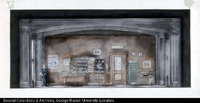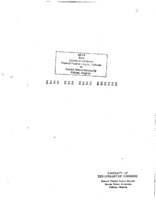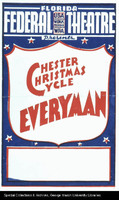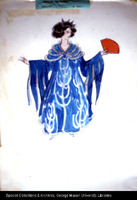
<p>The Federal Theatre Project (FTP) was a division of the Works Progress Administration (WPA), which was established to provide work for unemployed citizens during the Great Depression (1929-39). The FTP began in August 1935 and flourished as the first and only federally-sponsored and subsidized theater program in the United States until its closing in 1939. In order to advertise FTP productions, the Federal Art Project (FAP), a section of the WPA, developed a poster division. Using then-new silk-screening techniques, the FAP Poster Division created the posters which graced theater lobbies from New York to San Francisco and hundreds of other towns and cities in between. The FTP also utilized professional set and costume designers, who, along with the FTP workers who sewed the costumes and constructed the sets, added some dramatic realism to the productions.</p>
<p>In 1974 George Mason University professor Lorraine Brown discovered the Federal Theatre Project Collection in a Library of Congress storage depot and arranged for the collection to come to GMU on temporary loan. The materials were placed in the care of GMU's Research Center for the Federal Theatre Project headed by Dr. Brown. Among the many types of archival materials in the collection were original posters and set and costume designs for nearly six-hundred FTP productions. These materials, though fragile after decades of storage, still retained their vibrant colors. Beginning in August of 1981, as a preservation measure, 35mm color slides were made from each of the posters and set and costume designs in the collection. These slides are housed the University Libraries' Special Collections Research Center.</p>
<p>The Federal Theatre Project (FTP) Materials Collection contains nearly one thousand different 35mm slides taken from original posters, set designs, and costume designs. These images are of the original designs used on posters to advertise FTP plays in many different American cities from 1935 to 1939. Also included are playscripts for twenty-two productions. The images are indexed by title, author, subject, theater, place, date, and related names.</p>



